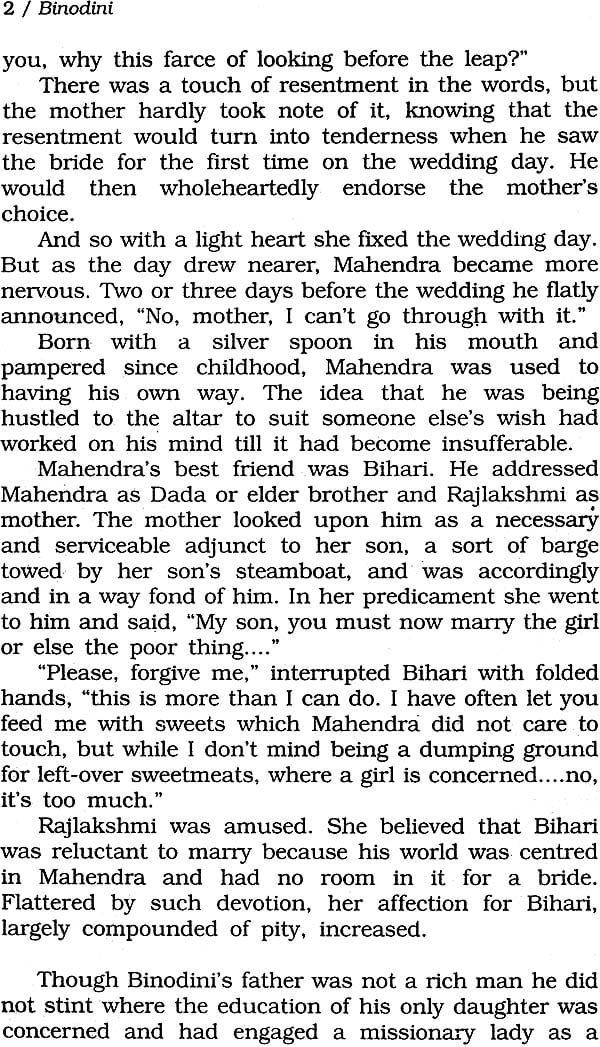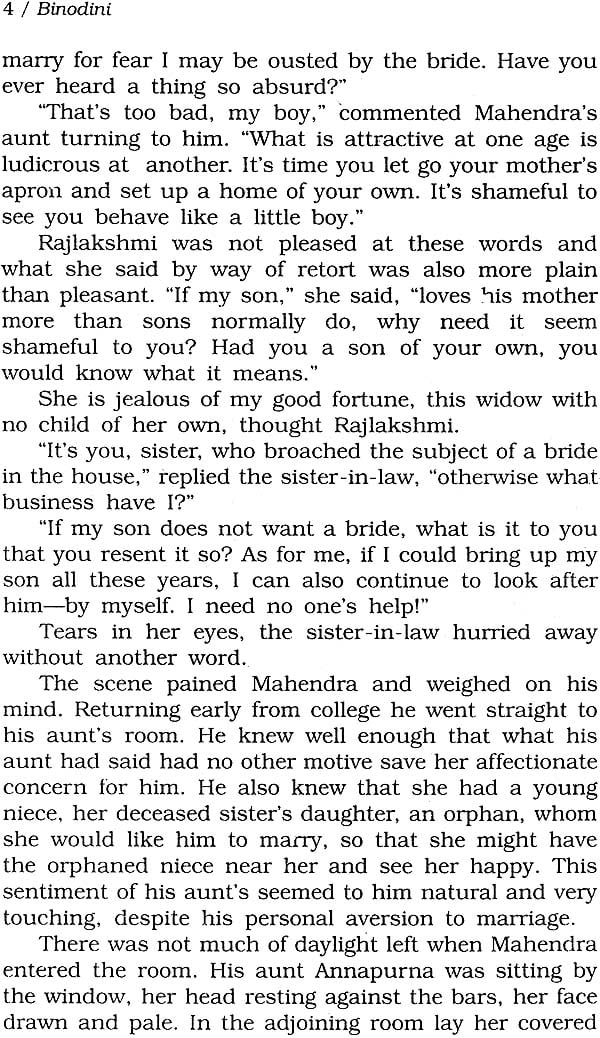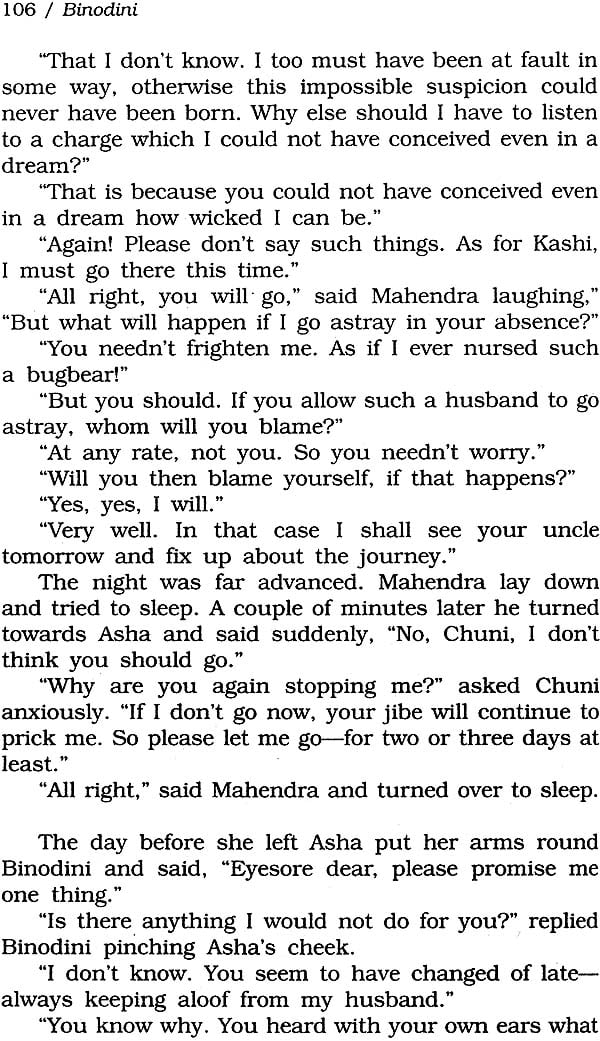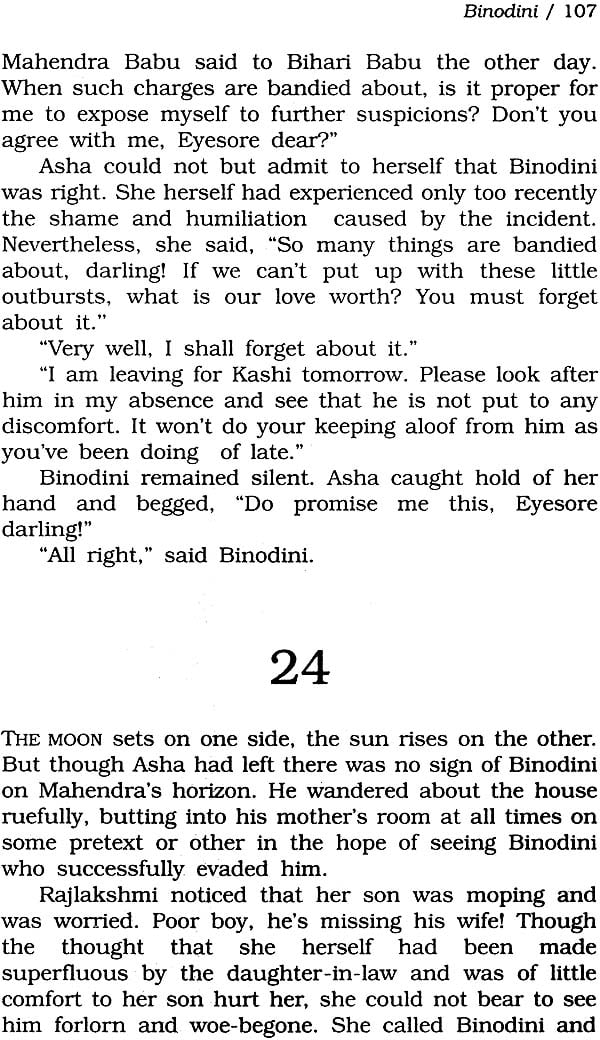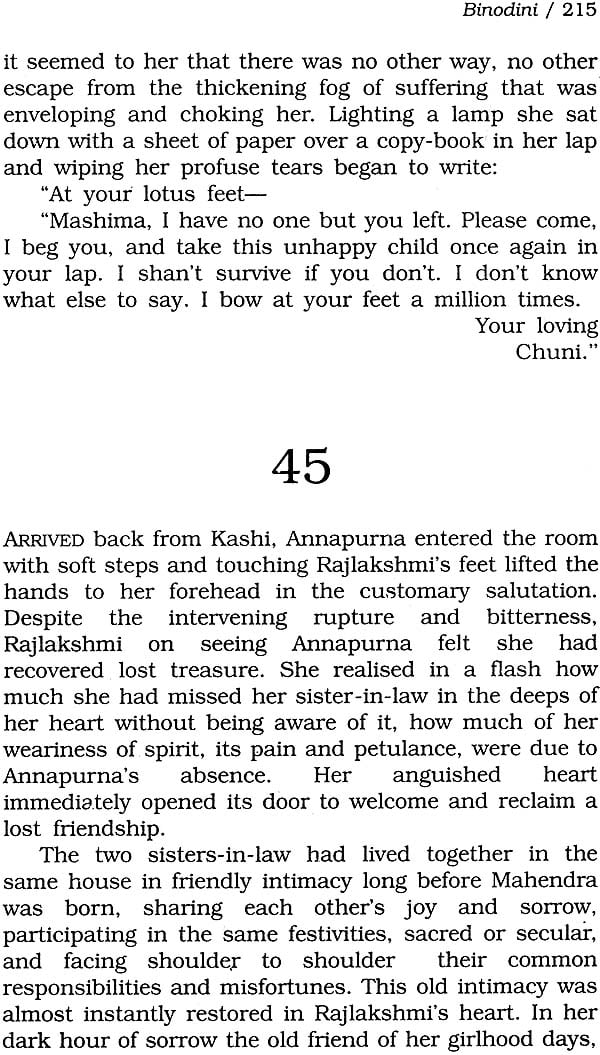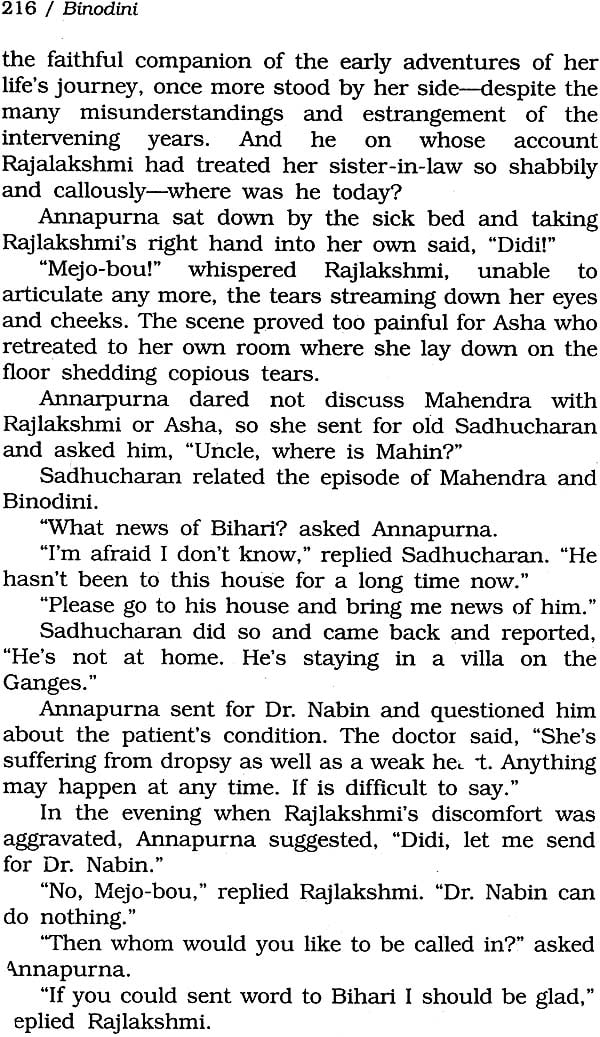
Binodini (A Novel)
Book Specification
| Item Code: | NAJ239 |
| Author: | Rabindranath Tagore |
| Publisher: | Sahitya Akademi, Delhi |
| Language: | English |
| Edition: | 2010 |
| ISBN: | 9788172014032 |
| Pages: | 253 |
| Cover: | Paperback |
| Other Details | 8.5 inch X 5.5 inch |
| Weight | 340 gm |
Book Description
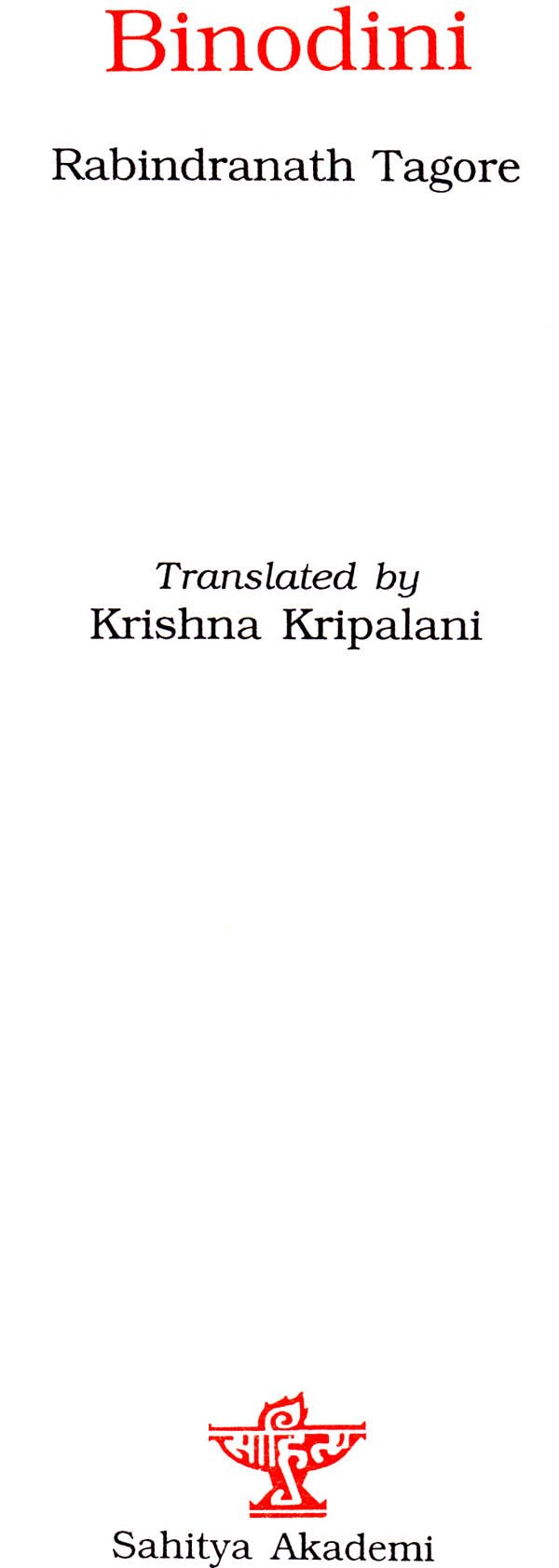
About the Book
This is one of Rabindranath Tagore’s most remarkable novels. Originally published in Bengali (Chokher Bali) in 1902, it has the distinction of being the first truly modern novel of India. Tagore wrote several other novels which are better known. But in no other novel of his is he a better storyteller. In no other novel has he watched the human drama with such gentle and calm irony. In no other novel has he accepted the kinship between love and sex with such frank sympathy-the white lotus of love rooted in the slime of desire. Of all women characters created by Tagore in his many novels, Binodini is the most real, convincing and full-blooded.
The picture on the cover is from ene of Tagore’s own paintings.
Foreword
This novel which in the original Bengali is known as Chokhar Beli (lit. Eyesore) was first published in 1902. It is the first modern novel in Bengali-and, one might say, in Indian literature, for the modern movement in Indian literature was first registered in Bengali and was later carried to other Indian languages. This is not to say that no novels were written in Bengali or other Indian languages before it. The credit of being the first great novelist in modern Indian literature must belong to Tagore’s predecessor, Bankim Chandra Chatterjee, whose novels laid the foundation of this form of literature in modern India. Tagore himself had written two earlier novels in the ‘eighties of the last century in which Bankim’s influence is clearly discernible. But these novels, whether Tagore’s or Bankim’s, can hardly be called modern in any true sense of the word. They are historical romances or social melodramas or a mixture of both, and while they can be still read with delight, they have little to do with life as commonly lived in contemporary India.
Though primarily a poet, it was Rabindranath Tagore who paved the way for the truly modern novel in India, whether realistic or psychological or concerned with social problems. And he began it with Chokhar Bali.
The story is simple and is simply told. It centres round the problem of human relationship and tells of what happens behind the staid facade of a well-to-do, middle class Bengali home of the period, where a widowed mother lives with her only son on whom she dotes. One would imagine that nothing much ever happens in a home like that, and in fact nothing happens that may not happen in any Indian home. And yet passions, naked and savage, are roused within hearts seemingly tame and battles rage until the home is nearly burnt down, without flame or smoke being visible to the outside eye.
There are only six characters in the novel-the fond mother devoted and jealous, the pampered son vain and self-centred, the simple untutored wife whom intense suffering alone could turn into a woman, the pious aunt who finds refuge in religion, the loyal friend so virtuous and noble that he seems somewhat of a prig, and the beautiful and vivacious widow who gives the name to the book. Of all women character created by Tagore in his many novels, Binodini is the most real, convincing and full-blooded. In her frustrations and suffering is summed up the author’s ironic acceptance of the orthodox Hindu society of the day.
A beautiful, talented and well-educated girl cannot get a husband because the parents have spent what little they had on her education and could not save enough for the dowry. In panic-since an unmarried girl over twelve years of age is a social disgrace to a respectable Hindu family of the day-she is married off to a poor and sickly nobody who dies soon after, leaving her stranded in an unsympathetic village. Conscious of beauty and wit she rebels against the unjust privations of a bleak and humiliated existence to which as a widow she is condemned for life and asserts her right to love and happiness. She burns her fingers and nearly burns up a home. If in the end she retires from the contest it is not because she is crushed but because she disdains a victory achieved at too sordid a cost. Her tragedy is a lasting shame to the Hindu conscience.
Tagore wrote several other novels some of which are better known than Chokhar Bali and as literary masterpieces far surpass it. In them his poetic imagination, the range and play of his intellect, his intuitive understanding of human nature and his inimitable flair for style found more mature scope. But in no other novel of his-the short stories excepted is he a better storyteller. In no other novel has he watched the human drama with such gentle and calm irony, without the intrusion of poetic rhapsodies or intellectual dissertations. In no other novel has he accepted the kinship between love and sex with such frank sympathy-the white lotus of love rooted in the slime of desire.
Needless to say, much of the literary flavour of the original is lost in the translation. As Tagore himself once put it, whatever else a translation may retain, the vitamins are inevitably destroyed in the process. This is all the more so in the case of a novel which is concerned with intimate domestic relations in a typical Hindu family with its complicated pattern of values and sentiments utterly alien to the idiom of the English tongue. Between the two alternatives of taking liberties with the original in order to make the reading smooth for the reader and of rendering it faithfully, even at the risk of some obscurity and of inviting the charge that the translation is in places un-English, the translator has chosen the latter, in the hope that the intelligent reader would prefer grappling with the authentic to being entertained by the spurious.
The translator’s liberty in changing the title of the book may be excused if it is recalled that in the first synopsis of the story jotted down by the author in his note-book the title originally conceived and given by him was ‘Binodini.’

